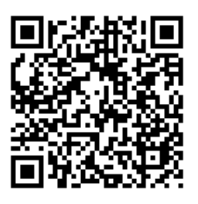Central bank gold buying made a blistering start to 2023. Q1 demand reached 228t. While lower than the figures seen in the previous two quarters this is nonetheless the strongest first quarter on record.1
This is all the more impressive considering it follows the record-breaking pace of demand last year. The rolling four-quarter total jumped significantly to 1,224t in Q1 following massive buying in recent quarters. As with the figures for both Q3 and Q4 2022, data for the current quarter contains a significant estimate for unreported activity.
Four central banks accounted for the majority of reported purchasing during Q1.2 The Monetary Authority of Singapore (MAS) was the largest single buyer during the quarter. The addition of 69t, the first increase in its gold reserves since June 2021, confirms that buying in Q1 was not only the domain of emerging market central banks. Gold reserves at MAS now total 222t, 45% higher than at the end of 2022.
The People’s Bank of China (PBoC), disclosed that its gold reserves had risen by 58t. Since recommencing reports of purchases in November 2022, the PBoC has added 120t to its gold reserves, lifting them to 2,068t (4% of total reported gold reserves).
Turkey was again a big buyer of gold during the quarter: official reserves rose by 30t. Combined purchases of 45t in January and February were offset by a sale in March – the first since November 2021.3 15t of gold was sold into the local market following a temporary partial ban on gold bullion imports.4 Overall, this lifted total gold reserves to 572t (34% of total reserves).
The Reserve Bank of India also added a modest 7t in Q1, lifting its gold reserves to 795t, while the Czech Republic (2t) and the Philippines (1t) were also notable buyers.
A significant update during Q1 came from the Central Bank of Russia in a resumption of its reporting of gold reserves, back filling data from the end of January 2022 to date. We can now see that in Q1 Russia’s official gold reserves fell by 6t, to 2,327t (25% of total reserves). However, even with this decline – possibly related to coin-minting – the country’s gold reserves are 28t higher than when it stopped reporting last year. Our historical series has been updated to reflect this, along with new information from other central banks.
Selling was again much more modest by comparison. The Central Bank of Uzbekistan (-15t) and the National Bank of Kazakhstan (-20t) were the largest sellers of gold during the quarter. As we have noted previously, it is not uncommon for central banks that purchase gold from domestic sources – as both Uzbekistan and Kazakhstan do – to be frequent sellers of gold. Cambodia (-10t), UAE (-1t) and Tajikistan (-1t) were the other notable sellers. Croatia reported a 2t reduction in its gold holdings in January but this was a transfer to the European Central Bank – which is required of all countries joining the euro area – and, as such, it does not represent a decline in the global universe of official sector gold.
Our broad expectation for central bank demand in 2023 has, so far, been borne out. Central bank buying remains robust, with little to indicate that this will change in the short term. As such, we maintain our belief that purchases will continue to outweigh sales as we move into Q2. But the exact pace of this net buying is difficult to determine. There are no guarantees that the rapid start to the year will be sustained, nor should we discount the potential for surprise activity – in both purchases and sales.

